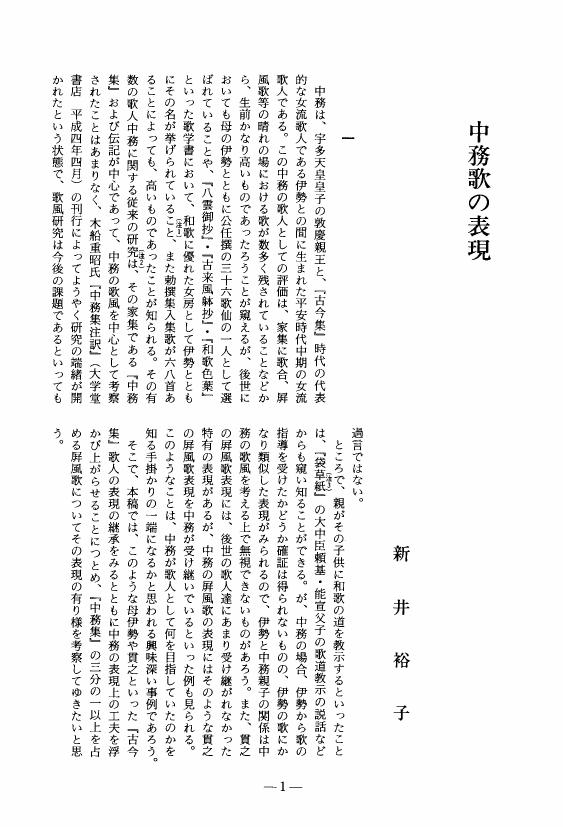9 0 0 0 OA 音楽演奏者の時間的制御能力について
- 著者
- 山田 真司 井村 和孝 新井 裕子 小田 満理子 西村 英樹
- 雑誌
- 情報処理学会研究報告音楽情報科学(MUS)
- 巻号頁・発行日
- vol.1995, no.46(1995-MUS-010), pp.21-28, 1995-05-19
音楽演奏者は自らの音楽的表現を行うために、正確に身体運動を制御する能力を有すると考えられる。音楽演奏者の基礎的な時間的制御能力を測定するため、中程度のピアノ演奏能力を有する音楽専攻学生に等間隔タッピングを行わせ、その時間間隔ゆらぎを分析した。その結果、等間隔タッピングの時間的制御に、過去約20 tapの時間間隔を保持する記憶機構が介在することが示唆された。また、様々なレベルのピアノ奏者、打楽器奏者および非音楽奏者に等間隔タッピングを行わせた結果、熟練したピアノ奏者は、非熟練者や非音楽奏者よりもゆらぎが小さかった。また、打楽器奏者は熟練したピアノ奏者よりも時間的制御が優れてはいなかった。
7 0 0 0 OA アル・キンデイーの音楽論
- 著者
- 新井 裕子
- 出版者
- The Society for Research in Asiatic Music (Toyo Ongaku Gakkai, TOG)
- 雑誌
- 東洋音楽研究 (ISSN:00393851)
- 巻号頁・発行日
- vol.1994, no.59, pp.1-22,L1, 1994-08-31 (Released:2010-02-25)
Al-Kindi (Alkindus in Latin, ca. 801-866), the first philosopher of the Islamic world, was a man of encyclopedic knowledge and wrote many treatises under the influence of ancient Greek philosophers. Thereby he built up a sound foundation of Islamic philosophy, which would be succeeded and developed by muslim philosopers such as al-Farabi (Alfarabius in Latin, ca. 870-950) and Ibn Sina (Avicennna in Latin, 980-1038), and by European scholars after the twelfth century. Music was regarded as a science adjacent to philosophy in ancient Greece and the Islamic world as well. Al-Kind's musical theory must hence not be neglected from such viewpoints.I have tried, in the course of the present paper, to give the full picture of al-Kindi's musical theory through analyzing all his extant treatises on music. These are the following four texts: 1) MS London: British Museum, Oriental Manuscript 2361, fols. 165r-168r; 2) MS Berlin: Staatsbibliothek, Wetzstein II, 1240, fols. 22r-35v; 3) MS Manisa: II Halk Kütüphanesi, Ms. 1705, fols. 107r-109v; 4) MS Oxford: Bodleian Library, Marsh 663, pp. 203-204, 226-238.The paper is divided into five parts dealing with lute ('ud in Arabic), various elements of music, compositional technique, the perfecting of musicianship, and theory of ethos. The first part describes al-Kindi's explanations on the strings, the method of tuning the strings, execution, the method of practice of 'ud as well as the size and the construction of this instrument. The second part deals with musical tone, interval, tune, transposition, and rhythm. The focus of the third part lies in types of composition; that of the fourth does in what is required to composers. The last part is divided into three sections: the strings of 'ud, colour, and smell.Throwing light upon the musical theory of al-Kindi, the paper have demonstrated that al-Kindi was not only an introducer of the Greek musical theory to the Islamic world but also an original theorist. He connected, for example, the four strings of 'ud with cosmology, and thought about the influence each string exerted upon the soul.Another grave issue have come up in the course of the paper: the importance of studying manuscripts and text critique. F. Rosenthal had already pointed out, in his article (1966), the possibility of the mixture of a work of al-Kindi and that of false-Euclid in some folios of MS Berlin. A newly discovered text, MS Manisa, was proved to be a different edition of some parts of MS Berlin. In addition, according to my opinion, MS London, the text being most popular among researchers, has some problems too.Certainly, MS London deals with various topics of music, but it is much different from the other texts in its contents. The number of strings of 'ud, for example, is five, like the later philosophers such as al-Farabi and Ibn Sina, according to MS London, whereas the number is four in the other texts; diagrams are included only in MS London; unlike the other texts, no idea of astrology is found in MS London.To settle this problem, the date of copying MS London may yield some clues. The manuscript was copied on November 29, 1662 from a manuscript written at Damascus in the middle of November 1224 based on “an imperfect and undependable” manuscript according to the copyist of MS London. It may therefore well be that there are some interpolations of copyists in MS London. One must hence be careful in citing this text for arguing al-Kind's theory; the full picture of his musical theory described in the present paper must also be renewed whenever the text critique is advanced and a new text is discovered.
2 0 0 0 OA ヒシモンヨコバイに酷似したヨコバイの発見
- 著者
- 新井 裕
- 出版者
- 日本応用動物昆虫学会
- 雑誌
- 日本応用動物昆虫学会誌 (ISSN:00214914)
- 巻号頁・発行日
- vol.22, no.2, pp.124-126, 1978-05-25 (Released:2009-02-12)
- 参考文献数
- 7
- 被引用文献数
- 1
2 0 0 0 OA 『疾患モデル動物の意義と役割』 医薬品研究開発に求められる疾患モデル動物
- 著者
- 新井 裕幸 倍味 繁 田原 俊介 伊藤 晋介 中原 夕子 守本 亘孝 小林 伸好 板野 泰弘 山口 高史 丹羽 一夫 関 二郎 志垣 隆通 中村 和市
- 出版者
- 公益社団法人 日本薬理学会
- 雑誌
- 日本薬理学雑誌 (ISSN:00155691)
- 巻号頁・発行日
- vol.144, no.3, pp.126-132, 2014 (Released:2014-09-10)
- 参考文献数
- 2
- 被引用文献数
- 1
医薬品の研究開発において,動物試験は新薬候補物質のヒトでの安全性および有効性を予測するために非常に重要なものである.また,3Rs(Replacement,Reduction,Refinement)の観点からも,より効率的に新薬候補物質の評価を行うことが必要である.このような理由から,疾患モデル動物には高い精度,再現性,ヒトへの外挿性を有することが求められている.日本製薬工業協会 医薬品評価委員会 基礎研究部会では,これまでの医薬品開発に貢献した疾患モデル動物について把握するとともに,今後の疾患モデル動物の開発に資することを目的として,加盟企業を対象にアンケート調査を行った.調査票では,これまでに新薬の開発等で使用した疾患モデル動物,使用によって得られた成果,使用の際に苦労した点および当該疾患モデル動物について改善されるべき点を尋ねた.さらに,今後期待される疾患モデルに関して意見を求めた.アンケートの回答は62 社中31 社から得られた.その結果,これまでに様々な疾患を対象とした医薬品の開発に多様な疾患モデル動物が使用されており,その多くの事例で疾患モデル動物の使用によって目的とする疾患に対する新薬候補物質の有効性が確認されていた.すなわち,新薬開発における疾患モデル動物の有用性と意義が改めて示された.使用の際に苦労した点としては,試験方法の至適条件の設定や疾患モデル動物作製の困難さ等に関する意見が多かった.各疾患モデル動物の改良すべき点としては,動物福祉の観点から動物に与えるストレスレベルのさらなる軽減,ヒトの病態や発症機序への類似性,薬効のヒトへの外挿性,ばらつきの程度,データの精度・再現性,モデル作製に要する手術等の高度な技術を必要としない簡便性が挙げられた.将来的な期待としては,ヒトの病態をより正確に反映した,外挿性の高いモデルの開発を期待するとの意見が多かった.本稿では,これらの調査結果の詳細を報告するとともに,動物試験および疾患モデル動物の役割,ならびに今後の展望について考察を加えた.
1 0 0 0 OA 中務歌の表現
- 著者
- 新井 裕子
- 出版者
- 中古文学会
- 雑誌
- 中古文学 (ISSN:02874636)
- 巻号頁・発行日
- vol.53, pp.1-12, 1994-05-30 (Released:2019-05-18)
1 0 0 0 OA 水田におけるカトリヤンマ卵の生態
- 著者
- 中川 雅允 本林 隆 新井 裕 西村 拓
- 出版者
- 社団法人 農業農村工学会
- 雑誌
- 農業土木学会論文集 (ISSN:03872335)
- 巻号頁・発行日
- vol.2004, no.229, pp.71-77, 2004-02-25 (Released:2011-08-11)
- 参考文献数
- 4
カトリヤンマは水田を主な生息場所とするトンボで, 水田の土壌中において卵態で越冬する. 以前は普通にみられたが, 近年著しい減少傾向にあることが報告されている. 本研究では, カトリヤンマの卵の生態について休眠性と孵化条件を調べた. その結果, 春期の休眠覚醒後の卵は一時的であっても乾燥による影響を受けやすいこと, 孵化は湛水状態にあったとき光を刺激として促進されることがわかった. また, 近年の圃場整備による乾田化や休耕田の増加はカトリヤンマの減少をもたらすことが示唆された.

